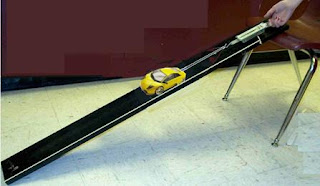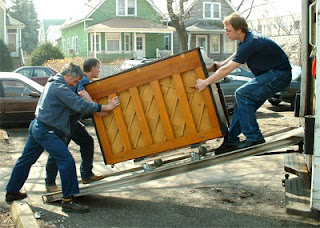"How are energy and velocity related?"
-From our lab, we were challenged to work with many different equations that helped us relate energy to velocity. We used the equation for spring potential energy, kinetic energy, and gravitational potential energy. By using these various equations, we were able to calculate values and relationships between energy and velocity.
Lab:
This lab was like a sequel to our previous lab with the rubber bands. We used the same setup with the air track and rubber band. Only this time instead of finding the force required for the rubber band, we were testing an entirely new concept of velocity.
We used equations we learned in class like the kinetic energy equation, K = 1/2mV^2, to help us calculate the velocity.
Our testing was basically just pulling the red glider back a certain distance in meters, then letting it go on the air track. After being released, the glider would pass under a velocity recorder. We connected this recorder to our labquest devices and were able to find the speed of the glider being pulled back at various distances.
(Whiteboard showing our data plotted on a graph using Vernier Graphical Analysis.)
After gathering all our data, we averaged it, squared it, and from there we could plug it into our equation to find the energy if we wanted to. This lab wasn't really about finding the energy, it was mainly just about getting practice with velocity and how it can relate to different forms of energy.
Today's World:
In our world today, these concepts of potential energy, kinetic movement, and velocity can be easily seen at any amusement park. Roller coasters may seem like fun and games, but there is actually a great deal of physics involved in these rides. When the car is stalled at the top of a hill on the roller coaster, it still has potential energy. When it slowly creeps forward and starts to plummet down the track, the potential energy is converted to kinetic energy and this movement carries the car around the rest of the track because no energy is lost, it only changes forms.















